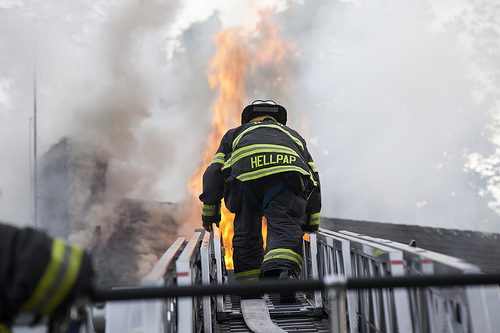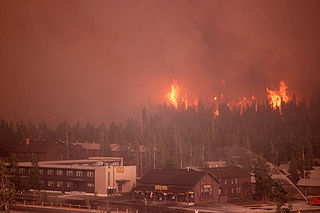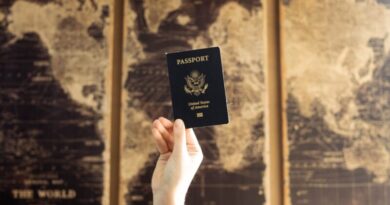Up In Smoke: 3 Famous Blazes and How They Affected America’s Landmarks
Beholding the magnificence and stories behind some of America’s greatest landmarks, it is hard to accept that these places are vulnerable to the power of nature. Time and again, some of America’s most famous locations have fallen victim to fire, both man-made and natural in origin. But the stories behind these famous fires are just as interesting as the places that almost went up in smoke.

The War of 1812: The Burning of Washington DC
August of 1814 was described as being just another day in the nation’s capital, save for one minor detail. In retaliation for the sacking of the Canadian city of York (now Toronto) by American forces, the British Governor-General of North America dispatched a force led by General Robert Ross to destroy the city of Washington. After routing a force of American Militia at the Battle of Bladensburg, the British proceeded to enter the capital and burn it to the ground. Famously First Lady Dolly Madison ordered her servants to save many priceless presidential heirlooms in lieu of the destruction of the White House. After the fall of Washington, General Ross’s forces attempted to capture Baltimore. The only thing that stood in their way was the American garrison at Ft. McHenry. A lawyer from Baltimore, in a attempt to free a friend detained by the British, witnessed the siege of Ft. McHenry and was compelled to write a poem that became the words to our National Anthem.
The 1906 San Francisco Earthquake and Fire
Visitors to the city by the bay in Northern California described San Francisco as the “Paris of the American west.” But on April 18th 1906, the city was rocked by a 7.9 magnitude earthquake, leveling most of the bay area. But the worst was yet to come. The debris left behind by the earthquake caused one of the most destructive fires on record for Northern California. Eighty percent of the city was laid to waste by the fire, including San Francisco’s original Chinatown, the Metropolitan Opera House, and San Francisco’s opulent city hall building. But from the ashes of the devastated city arose an even stronger incentive to rebuild, leading to the San Francisco that most people know today.
The Yellowstone Fires of 1988
 Occasionally it is healthy for a forest to burn, or at least that was the mentality of the National Park Service in 1988. Traditionally NPS would set smaller controlled fires in order to manage the underbrush and prevent larger canopy fires. But during a dry September in 1988, several controlled burns were combined into a larger forest fire that ran rampant over the much of the park. By the end of the blaze, 793,880 acres were affected by the fire. Over 9,000 fire fighters and 4,000 military personal were sent to support the NPS’ efforts and monitor the surrounding areas. The Yellowstone Fire was estimated to have cost the Federal Government roughly $120 million. Only when a rain storm passed through the area was the Yellowstone Fire of 1988 finally brought under control.
Occasionally it is healthy for a forest to burn, or at least that was the mentality of the National Park Service in 1988. Traditionally NPS would set smaller controlled fires in order to manage the underbrush and prevent larger canopy fires. But during a dry September in 1988, several controlled burns were combined into a larger forest fire that ran rampant over the much of the park. By the end of the blaze, 793,880 acres were affected by the fire. Over 9,000 fire fighters and 4,000 military personal were sent to support the NPS’ efforts and monitor the surrounding areas. The Yellowstone Fire was estimated to have cost the Federal Government roughly $120 million. Only when a rain storm passed through the area was the Yellowstone Fire of 1988 finally brought under control.
Throughout each event, the overriding theme has been despite the devastation caused by these infernos, the drive to rebuild has been even greater. Interwoven in the legends of these places is the story of how they were almost erased permanently from our historical atlas. Remember, if your home or business has experienced fire damage, it is important to call a fire restoration company immediately.
About the author:
Blackhill Resotration is a fire, smoke, and water damage reconstruction company in Texas. They are social! Like them at their Facebook page.



